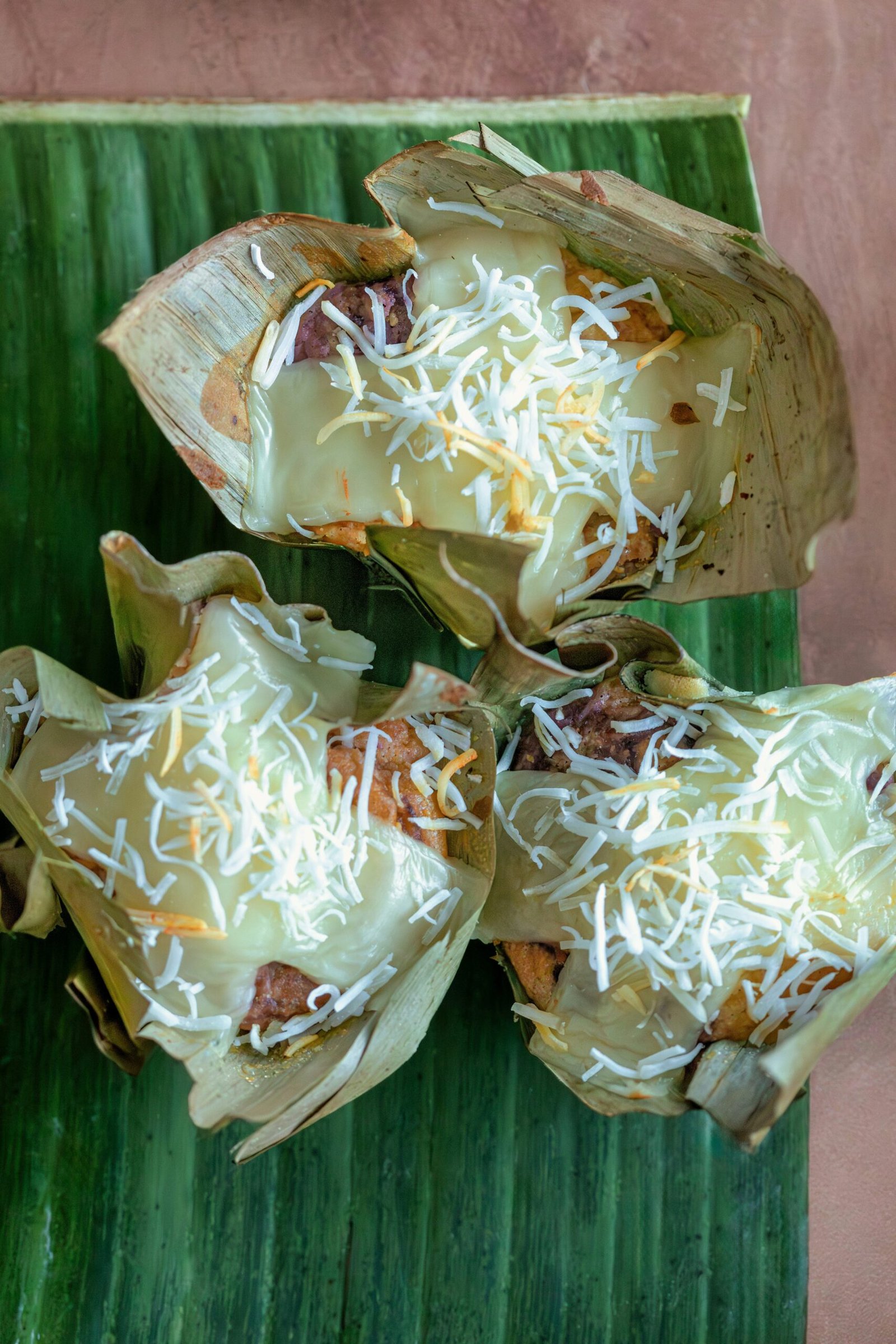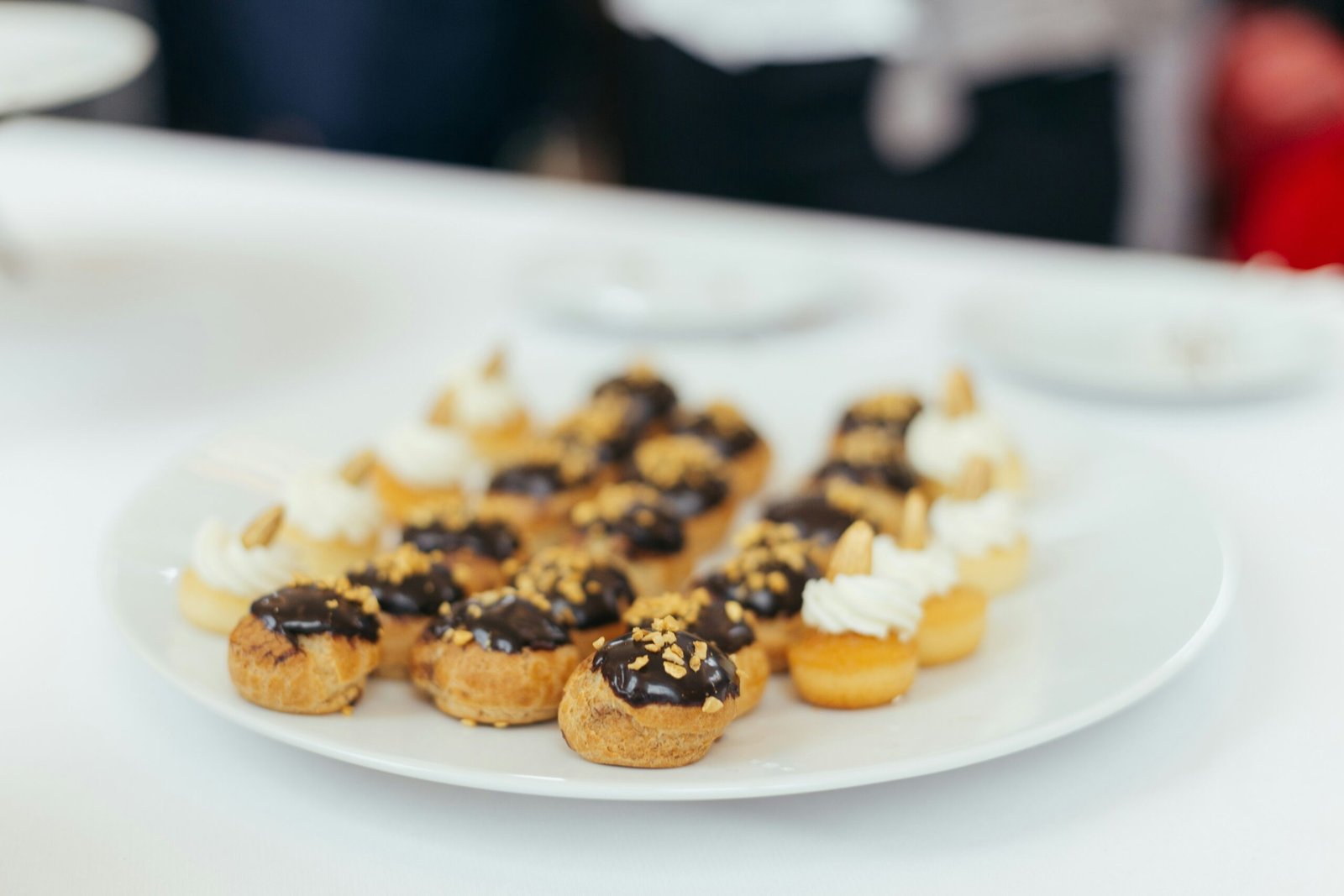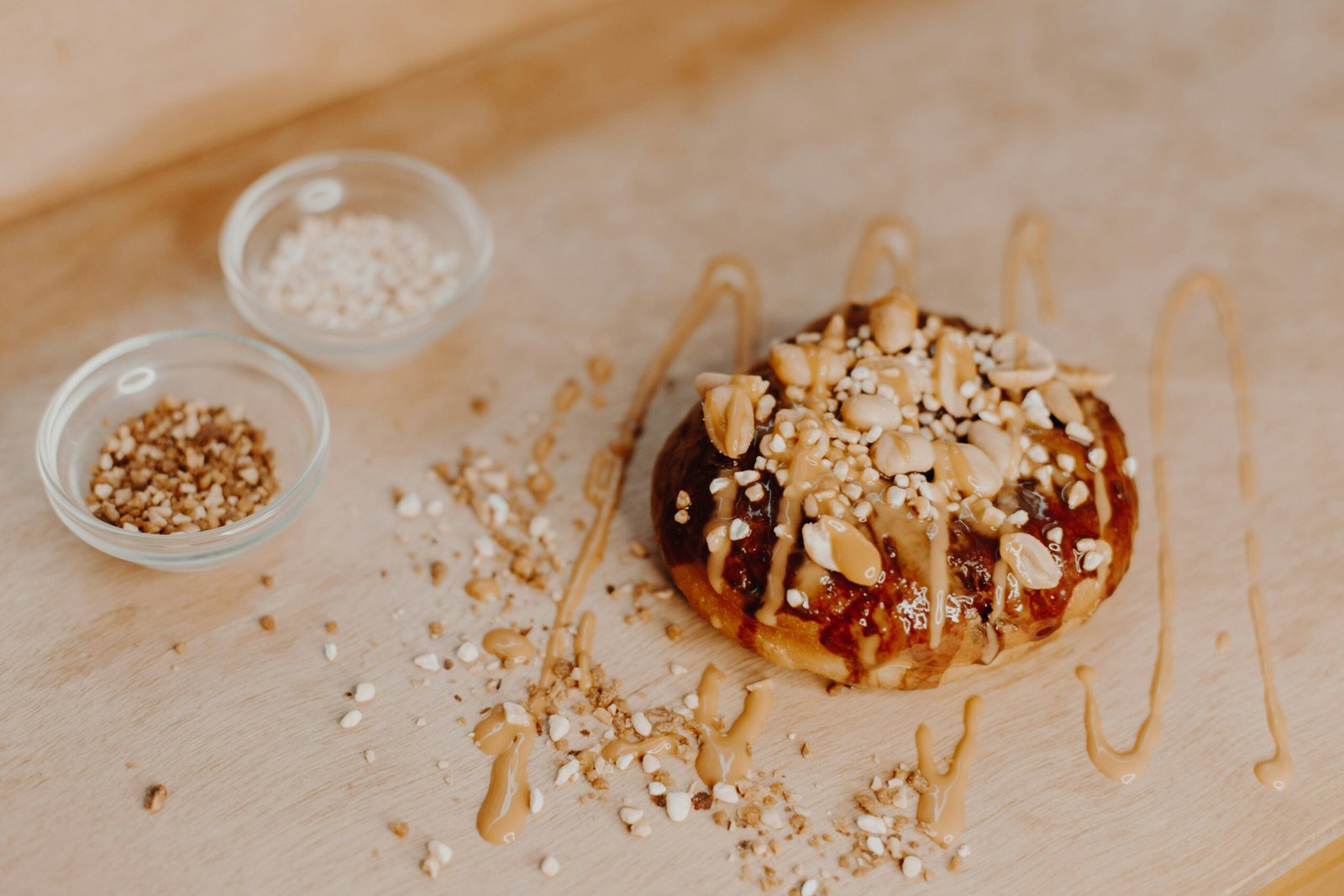Introduction to International Holiday Desserts
The rich tapestry of global cultures finds vibrant expression through diverse holiday desserts that bring families and communities together during festive seasons. Across continents, these sweet creations not only serve as delightful treats but also emphasize the significance of cultural heritage and traditions. Each holiday dessert tells a story deeply rooted in history, local ingredients, and time-honored recipes, contributing to the joy of celebration and the spirit of togetherness.
This blog post aims to explore a selection of festive dessert recipes from various cultures, showcasing the delightful variety found in international holiday sweets. By highlighting these treats, we celebrate not only their flavors but also the traditions they represent. Inspiring chefs and home bakers alike, this post serves as an invitation to experience the joys of global holiday desserts, encouraging readers to appreciate the different ways communities celebrate and share sweet moments. Emphasizing the unity found in culinary diversity, we embrace the idea that sweets, regardless of their origins, contribute to the larger narrative of holiday cheer and togetherness.
Italian Panettone: A Sweet Tradition
Panettone, a beloved Italian dessert, is deeply rooted in the cultural and culinary heritage of Italy, serving as a symbol of joy and celebration, especially during the Christmas season. Its origins can be traced back to Milan, where it has been enjoyed for centuries. Legend suggests that the dessert was first created in the 15th century, evolving over time to become the fluffy, dome-shaped delicacy we recognize today. The cultural significance of panettone extends beyond mere taste; it embodies family traditions and festive gatherings, inviting people to come together and share in the warmth of the holiday spirit.
Characterized by its light and airy structure, traditional panettone is made using a unique, slow fermentation process. This method contributes to its exceptional texture and rich flavor, which includes hints of citrus and dried fruits. Ingredients such as flour, sugar, eggs, butter, and a variety of candied fruits or chocolate are meticulously chosen to ensure an authentic taste. The preparation involves a careful balance of kneading and resting periods, allowing the dough to develop its signature fluffiness and complexity. The fermentation process itself can take several days, requiring patience and attention to detail—yet it is this very dedication that results in a panettone worth savoring.
To create an authentic panettone at home, beginning with high-quality ingredients is essential. The use of natural yeast can enhance the fermentation process and yield a superior product. Baking at a controlled temperature ensures an even rise without burning the outside, while cooling it upside down prevents the bread from collapsing. The holiday season is the perfect time to try one’s hand at baking this Italian treasure, combining tradition with personal flair. Sharing the end result with loved ones only strengthens the ties that this delicious dessert fosters during the holiday celebrations.
Mexican Buñuelos: A Heavenly Delight
Among the myriad of sweet treats that grace holiday festivities in Mexico, buñuelos stand out as a cherished delicacy. These delightful, crispy pastries are particularly significant during major celebrations such as Día de los Muertos and Christmas. Buñuelos are customarily prepared and shared among families, embodying a spirit of togetherness and festivity, making them an essential part of Mexican holiday traditions.
The preparation of buñuelos involves a relatively simple dough made from flour, eggs, and a pinch of salt. Once the dough is rolled out into thin circular disks, it is then fried to achieve a perfect golden-brown hue. The frying process requires attention to temperature; oil should be preheated to around 350°F (175°C) to ensure that the buñuelos become crisp while avoiding excessive greasiness. Achieving that perfect crisp texture can also be enhanced by frying in smaller batches, preventing temperature drops and ensuring even cooking.
There are several variations of buñuelos across Mexico, each with its own unique twist. Some regions prepare sweet buñuelos that are sprinkled with sugar, while others opt for savory versions served with cheese. Toppings can significantly enhance the flavor; traditional options include cinnamon sugar, honey, or syrup infused with piloncillo, a type of unrefined cane sugar. Experimenting with different toppings allows one to personalize this classic dessert to suit individual tastes.
For those preparing buñuelos at home, it’s essential to consider the timing between frying and serving. To keep the buñuelos crispy, serve them immediately after frying. Incorporating these delightful treats into holiday meals not only delights the palate but also enriches the cultural tapestry of Mexican celebrations, making buñuelos a truly heavenly delight.
German Stollen: The Gift of Flavor
Stollen, a traditional German fruitcake, holds a venerable place in the nation’s culinary history, particularly during the Christmas season. Its origins trace back to the 15th century, with early records indicating that it was served at royal tables and enjoyed by the general populace alike. Over the years, stollen has come to symbolize the festive spirit of Christmas, often presented as a gift during the holiday season. This beloved cake is often adorned with powdered sugar to resemble a blanket of snow, reinforcing its ties to winter and the joyful celebration of Christ’s birth.
The traditional recipe for stollen includes a rich blend of dried fruits, such as raisins and currants, intertwined with nuts like almonds and hazelnuts. Spices such as cinnamon and cardamom are added, contributing to the cake’s aromatic profile that evokes warm holiday memories. The inclusion of these ingredients is not merely for flavor; they hold various meanings, symbolizing prosperity, fertility, and good fortune for the coming year. This connection makes stollen not just a culinary delight but also a meaningful part of German tradition.
Baking stollen can seem daunting, but with an understanding of the proper techniques, anyone can achieve a perfect result. First, ensure the ingredients, especially the dried fruits and nuts, are of high quality; this greatly enhances flavor. The key to moist stollen lies in the dough’s hydration level. A well-mixed dough should be tacky but not overly sticky. Furthermore, allowing the stollen to rest after baking is crucial; it enables the flavors to meld beautifully. Wrapping the cooled stollen in a cloth or aluminum foil helps retain its moisture. For those seeking an authentic experience, incorporating a bit of marzipan into the center can elevate the flavor profile, creating an exquisite treat that encapsulates the essence of the holiday season.
French Bûche de Noël: A Culinary Masterpiece
Bûche de Noël, or Yule log, is a cherished French dessert traditionally served during the Christmas season. This festive confection symbolizes the Yule log that families would burn in their hearths as a part of Winter solstice rituals, signifying warmth, comfort, and the enduring spirit of the holiday season. With roots dating back to the 19th century, this dessert has evolved into a culinary masterpiece, often taking center stage at holiday tables across France and beyond.
The classic Bûche de Noël consists of a delicate chocolate sponge cake, known as génoise, which is rolled and filled with rich, creamy fillings. Commonly, these fillings include decadent buttercream, ganache, or even mousse, imparting a luxurious texture and flavor. Once assembled, the cake is usually coated with chocolate buttercream to resemble the bark of a tree, which adds to its rustic charm. To enhance its visual appeal, bakers often decorate the Bûche with meringue mushrooms, candied fruits, or edible gold dust, creating a centerpiece that invites admiration.
When preparing your own Bûche de Noël, several tips can ensure a beautiful and flavorful result. Firstly, it is essential to bake the sponge cake evenly, allowing it to cool slightly before gently rolling it into its log shape with a clean kitchen towel. This technique helps prevent cracking. Additionally, using a high-quality chocolate for the buttercream adds depth of flavor and elegance to the dessert. Lastly, when decorating, consider using natural elements such as pine needles or berries to evoke the spirit of a winter forest, uniting nature with taste in a delightful celebration of the season.
Japanese Mochi: Sweet Treats for the New Year
Mochi, a beloved traditional Japanese rice cake, holds a special place in the hearts of many, particularly during the New Year celebrations. The process of making mochi, known as “mochi-tsuki,” is a festive custom that involves the pounding of glutinous rice to create a sticky and pliable dough. This communal activity is often accompanied by friends and family, fostering a sense of togetherness and anticipation for the New Year.
In Japan, mochi symbolizes good fortune and prosperity, making it an essential component of the New Year festivities. The chewy texture and sweet flavor of mochi are celebrated, with many families incorporating it into various dishes and desserts. During the New Year, it is not uncommon to see mochi served in a variety of forms, such as “ozoni,” a traditional soup containing mochi and vegetables, or simply enjoyed on its own with soy sauce or sugar.
For those interested in making their own mochi, the process begins by soaking glutinous rice overnight, followed by steaming it until tender. Once cooked, the rice is pounded into a smooth dough, which can be challenging but rewarding. During this process, it is vital to sprinkle the dough with katakuriko (potato starch) to prevent sticking. The resulting mochi can be shaped into small rounds or squares, and it is recommended to allow the dough to rest for a brief period.
Additionally, the versatility of mochi allows for various fillings, enabling the creation of delightful treats with diverse flavors. Popular fillings include sweet red bean paste (anko), fresh fruits such as strawberries, and even ice cream for a modern twist. By experimenting with different combinations, one can craft festive variations that embody the spirit of the New Year while enjoying a delightful treat that carries rich cultural significance.
Middle Eastern Baklava: A Rich Delight
Baklava is undoubtedly one of the most cherished desserts in Middle Eastern cuisine, celebrated for its rich textures and sweet flavors. This multilayered pastry is deeply embedded in the cultural fabric of many Middle Eastern countries. Traditionally served during festive occasions such as Eid and weddings, baklava symbolizes prosperity and joy. Its preparation often involves family and friends, transforming the act of baking into a communal celebration. The sharing of this decadent dessert can foster connections, allowing for the passing down of recipes and culinary traditions from generation to generation.
The composition of baklava is what makes it truly unique. Layers of phyllo pastry, which are delicate and flaky, are interspersed with a generous filling of chopped nuts, typically walnuts, pistachios, or almonds. Each layer is brushed with melted butter, contributing to the pastry’s signature crisp texture. Once assembled, the baklava is cut into diamond or square shapes before being baked to a golden perfection. The finishing touch is a sweet syrup, traditionally made from honey, sugar, and a hint of citrus, drizzled over the baked pastry to infuse it with sweetness. This contrast of textures—the crisp layers against the sticky syrup—creates an indulgent taste experience that is hard to resist.
For those looking to prepare baklava at home, achieving perfectly flaky layers is essential. It is crucial to ensure that each sheet of phyllo dough is adequately buttered. Take care to work with the phyllo sheets promptly, as they can dry out quickly. Also, consider preparing the nut filling in advance for convenience. After baking, allow the baklava to absorb the syrup for several hours or even overnight, leading to an enriched flavor and aroma that makes it irresistible. By following these steps, home bakers can create a delightful and celebratory dessert that honors the tradition and flavor of Middle Eastern baklava.
Indian Gulab Jamun: Sweetness in Every Bite
Gulab jamun is a quintessential dessert that plays a significant role in Indian festivities, particularly during celebrations such as Diwali and weddings. Known for its delightful sweetness and rich cultural heritage, this dessert is cherished across diverse regions in India. The word “gulab” translates to rose, referring to the floral essence often infused in the syrup, while “jamun” indicates the round, berry-like shape of the sweet balls. The preparation of gulab jamun involves creating small dough balls from khoya (reduced milk), which are then deep-fried until they achieve an enticing golden brown hue.
Once fried, these delicate balls are soaked in a fragrant sugar syrup, flavored with cardamom, rose water, and sometimes saffron, which enhances the overall taste. The result is a dessert that offers a burst of sweetness with every bite, symbolizing joy and celebration. During festive occasions, serving gulab jamun is a gesture of hospitality, signifying the warmth and richness of Indian culture.
To achieve the perfect texture and flavor of gulab jamun, meticulous attention must be paid to the cooking techniques. When forming the dough, it is crucial to knead it gently to avoid overworking, which can lead to a dense final product. The frying process itself requires precise temperature control; the oil should be hot enough to cook the balls through without burning, yet low enough to allow even cooking. The ideal frying temperature is around 320°F (160°C), ensuring they fluff up beautifully while absorbing the syrup.
In addition to frying, the preparation of the sugar syrup deserves special mention. The syrup should not be overly thick; a light consistency allows the gulab jamun to soak adequately without becoming too mushy. Achieving the right balance of sweetness is vital—generally, a ratio of 1:2 of sugar to water suffices, with the addition of flavorings as desired. By carefully considering these steps, one can craft the perfect gulab jamun, making it a cherished treasure in any festive spread.
Conclusion: A Global Celebration of Sweetness
Holiday desserts serve as more than mere indulgences; they encapsulate the rich tapestry of cultural traditions and familial bonds. As we gather around festive tables, these sweet treats bear witness to centuries of history and communal stories, weaving together diverse backgrounds into a harmonious celebration. Each country has its unique way of presenting holiday desserts, reflecting local ingredients, historical influences, and distinct tastes. From Italian Panettone to Mexican Buñuelos, these delicacies contribute to a shared experience that fosters understanding and appreciation of each other’s heritage.
The act of preparing and sharing desserts during holiday celebrations creates opportunities for connection. Families come together, experimenting with international recipes, thereby nurturing creativity and extending culinary skills. Attempting to recreate a beloved dessert from another culture not only cultivates a sense of curiosity but also promotes a spirit of inclusivity. As we explore global dessert traditions, we can bridge gaps and form meaningful relationships with those who may be different from us, united through the universal love of sweets.
Food has an unparalleled ability to form lasting memories. By embracing holiday desserts from around the world, we invite multicultural influences into our homes and communities, enriching our celebrations. Whether it’s a simple gathering of family or a large festive event, sharing these delightful confections can enhance the joy of the season. So, as you embark on your culinary journey through festive desserts, relish the experience of discovery, share these creations, and ultimately celebrate the unity that comes from breaking bread— or in this case, dessert— together. This holiday season, let the sweetness of diverse desserts illuminate your gatherings and create cherished moments that linger long after the last bite is savored.









